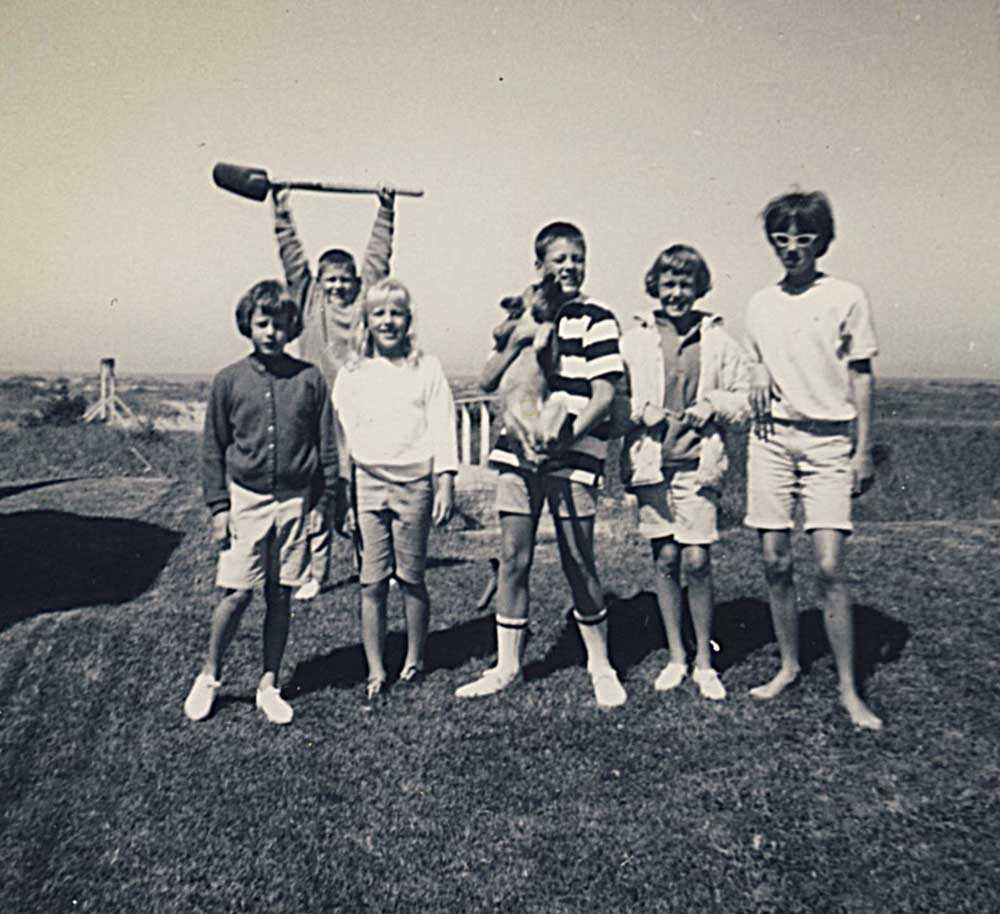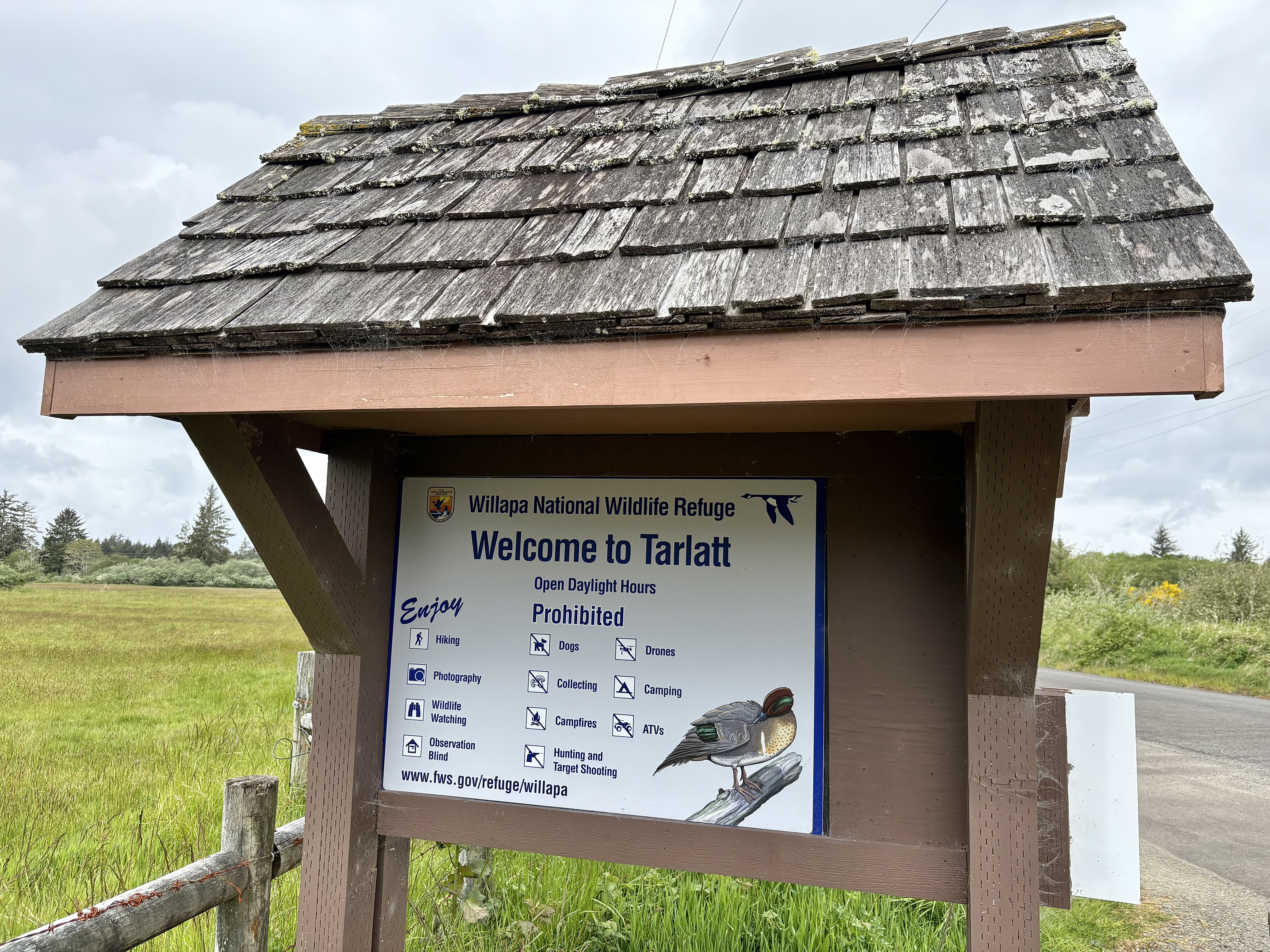He’s got a razor! Clamming is fundamental to coastal living
Published 9:48 am Tuesday, November 28, 2017

- Donna Magnuson, second from right, visited Long Beach in about 1962 to dig clams with her siblings and cousins. She is married to Observer editor Matt Winters.
My cousin Bob Bell, who lives in Naselle, reminded me last week that clam digging meant something entirely different growing up in the Rocky Mountains than it does for us nowadays on the Washington coast.
Trending
As boys, it seemed every summer weekend was spent in the high country — the mountains and desert. At the southern end of the Wind River Range, the two kinds of terrain blur into one another, a sagebrush sea lapping along a rocky upland “shore” covered with wind-scoured lodgepole pines. Between poor soil and a miserable climate, the ground surface is often naked of vegetation, exposing evidence of distant times — everything from dinosaur bones and bison skulls, to surplus objects abandoned on the Oregon Trail and long-lost Indian arrowheads. Compared to our coast where abundant plant life swiftly covers anything that stands still too long, Bob and I grew up in literally a happy hunting ground where many summer walks were rewarded with interesting finds.
The most mind-altering discovery any observant person makes in the high desert is that vast forces of time heave and ripple and tear our planet — folding it up, plunging it down and lifting it up again, over and over. Continents experience a geological tide in which mornings and evenings are separated by eons invisible to short-lived creatures like ourselves.
Viewed on a godlike timescale, “solid ground” is anything but. Vast seas rise where once there was land, and then run away as enormous mountain chains are born. Pebble by pebble, these erode away and sink once again, the highest peaks worn away to nubs before sinking beneath a new sea.
Trending
Anyone can observe the signs of endless this transformation all around in the highlands of the interior West. Seashells are among the most obvious clues.
Fundamentalist settlers — Bob and I honor several among our ancestors — must have had to do some clever “splainin” to talk their way around the presence of ocean clamshells 7,500 feet above the nearest ocean. Even today, one doesn’t have to look far to find those who thoroughly believe the earth was created somewhere between 6,000 and 12,000 years ago. But fossils attest to the far more complicated truth, one that Bob and I learned from our Uncle Tom Bell, who was both a sincere Christian and a deeply rational scientist.
Clams are thought to have first appeared more than half a billion years ago. Their shells lend themselves to preservation in a recognizable shape, so it comes as no surprise that their fossils are found all over — from the loftiest Himalayas to the Willapa Hills. There are places in Pacific County where living clams live nearly side-by-side with fossilized distant ancestors many millions of years old.
Besides simple clamshells eroding out of badland gulches, we used to find numerous other forms of ancient sea life — among them fossilized brain corrals, the carapaces of squid-like creatures that we called “petrified pencils,” and spiral-shelled sea snails with their flesh replaced with translucent agate. Ancient oceans were diverse habitats that can be explored on foot today, as though walking through corral reefs millions of years old.
After becoming editor here on the coast nearly 30 years ago, one of my first big stories was the West Coast discovery of domoic acid, a marine toxin that began complicating razor clam seasons in 1991.
At first, I had no concept of what a big deal clam digging is for the people of this seashore and adjacent cities. The urgent tones of my staff at the time caught my attention. There was serious upset. Being informed they might not be allowed to dig clams on the public beach would be as if my grandparents had been told they couldn’t cut firewood in the National Forest, a social activity that for them bordered on religious mania.
In the years following that initial domoic scare, the toxin has left swaths of years unaffected, while in others it has ranged from nuisance to near-disaster for the citizens and merchants of Pacific County. So far in the 2017-18 season, clamming dates have been scarce due to near-term concerns about clam abundance, but the toxin has left us alone. We can only hope it stays that way. For the future, I worry that a warming ocean might become more friendly to the marine plankton that for mysterious reasons sometimes produces domoic acid. As such an important part of local heritage, it will be tragic if clam digging ceases to be safe.
Calling clamming a heritage is no exaggeration. I recently helped provide a few illustrations for David Berger’s fantastic book, “Razor Clams: Buried Treasure of the Pacific Northwest.” In what is surely an ideal Christmas gift for any clam fanatic, Berger explains the traditions and enduring appeal of razor clam harvests on the Washington coast.
“People discover the activity, taste the primal joy of abundance, and invite family and friends on a regular basis,” Berger writes. “During a recent season, people harvested more than six million clams, enough to pile a hundred clams on every seat in the Seattle Seahawks’ football stadium. It’s not too unusual for folks to display some razor clams at home or in the garage as trophies, or to read in a coastal newspaper obituary, ‘So-and-so loved to razor clam and took pride in always getting a limit.’
“The phenomenon thrives despite the proliferation of video games and computer screens, cable television and professional sports. A turn away from nature? Not to the men, women, and children who flock to the coast to clam. … Sea, sky, and razor clam shows leave little room for other thoughts. The beach is wild, the undertaking elemental. It’s challenging, and yet most who try meet with success. Razor clamming is the people’s activity, an often-ritualized experience enjoyed over and over. You dig with shovel and tube, and hands. You perch on the coastal rim where sand, sky, sun, and water edge together. You brave the elements and accompany the clams on the rough journey from this special place to foodstuff. You know where your dinner comes from; you harvested it just a few hours before.”
Berger closes his book with the fun suggestion that Pacific and Grays Harbor county school kids mount a campaign to convince legislators to designate an official state clam, joining the official state tree (western hemlock), state amphibian (Pacific chorus frog), state vegetable (Walla Walla sweet onion) and state endemic animal (the Olympic marmot).
As anyone who has read my columns over the years will know, all kinds of industrial history are a main fascination of mine, and so it is with commercial clam harvesting and canning. I first learned what a big deal it was here from the great Noreen Robinson, the dazzlingly smart and energetic founder of the Columbia Pacific Heritage Museum. (What a grand woman she was!) I bought some razor clam can labels at the museum gift store, among the first acquisitions in my now-ridiculously huge collection of local shellfish artifacts and paper items.
Why collection such stuff? Aside from its importance to local culture and economy, I came to realize that it represents a continuation of my boyhood interest in seashells — fossilized and otherwise. Some of those ancient ones I collected in the desert as a boy still sit on my windowsill at work, along with new ones picked up on beach trips around the world. In bowl at home is a spiny spider conch murex seashell Aunt Lucille bought for me on a trip to Seattle Center when I was 10. They are, in other words, an obsession — a tangible connection to the sea and to creatures that are wonderfully adapted to unique habitats.
Writing of the first generation of commercial digging a decade on either side of 1900, Berger says, “Soon, most every hamlet in Washington and Oregon near a razor clam beach had a clamming operation, or several, as large-scale utilization of the resource took off. From the early 1900s on, razor clam canning was a thriving industry and the goods, generally chopped or minced, were as favored and ubiquitous as canned tuna is today. In 1915 Washington produced more than three million pounds of canned razor clams, a high-water mark. Labels were distinctive and colorful. Some assured customers that the cans were packed by white labor, a nod to the anti-Chinese sentiment of the time. … Diggers were preoccupied with the price paid by the buyers and also the exploits of champion diggers, who occasionally collected six hundred or even a thousand pounds on a good low tide, if they were skillful and found a productive bar, and dug like demons.”
At some point, possibly post-retirement, I hope to put out a book of my own with photos of many things pertaining to oystering and clamming here on this coast. As with salmon can labels — a much more frequent and popular area of collecting about which I’ve published earlier books — in many cases there are few traces of the processing facilities where local people worked hard to support their families.
The naive artwork on things like labels and letterheads were among their first attributes that attracted my eye 25 years ago. A sample of them are included with this article. I wish I could be encouraging to anyone hoping to start a collection of their own, but most are excruciatingly difficult to find.
But much more than their rarity and interesting appearance, I think it is what they symbolize that means the most to me: Northwest families spending time in the outdoors enjoying the thrill of clam digs, and workers braving the Pacific’s cold water and rough surf to support their families.
Clamming represents much that is enduring and endearing about life on the coast. I hope it’s a tradition that continues long into the future, some way or another.
EDITOR’S NOTE: “Razor Clams: Buried Treasure of the Pacific Northwest,” is published by University of Washington Press. It sells for $26.95 in hardcover and can be found or ordered at local bookstores.









